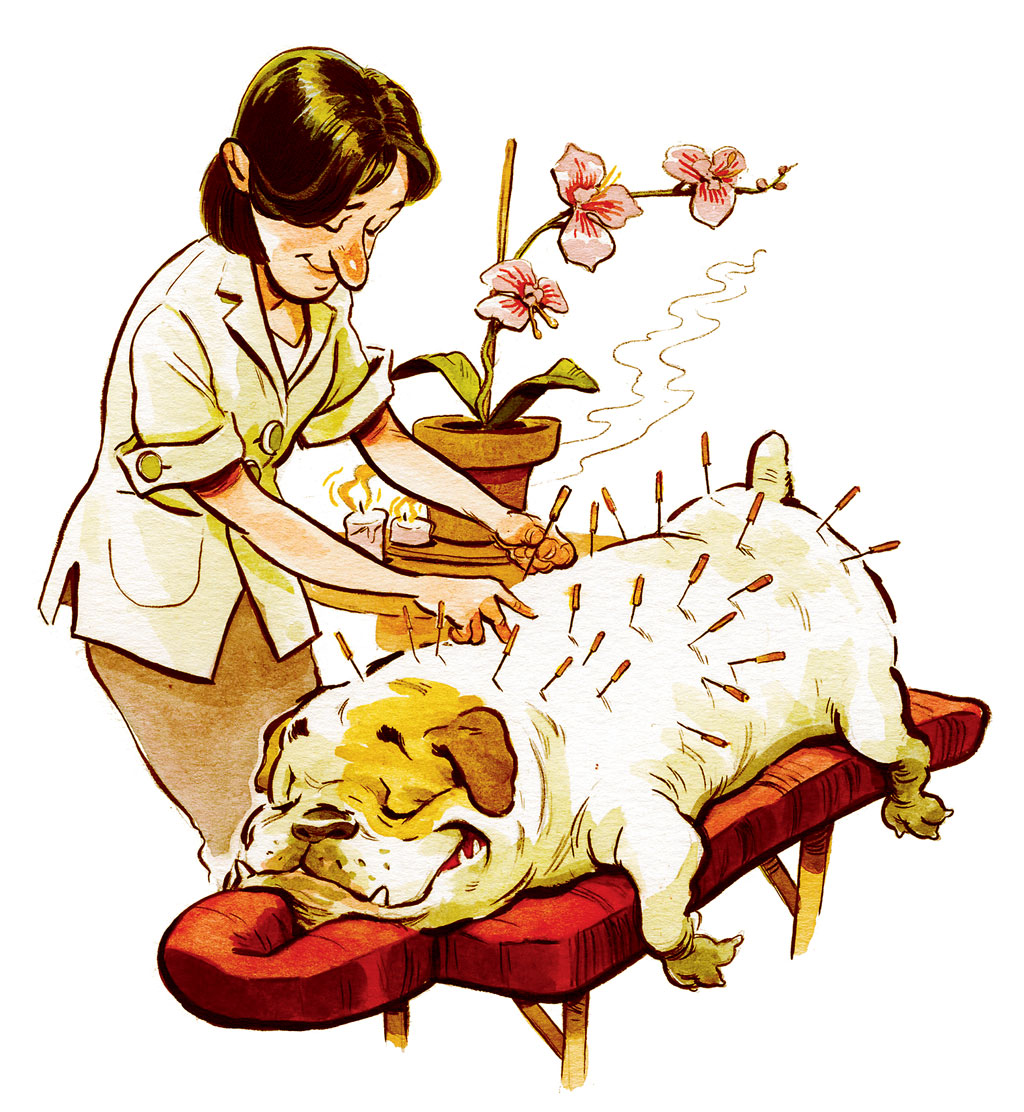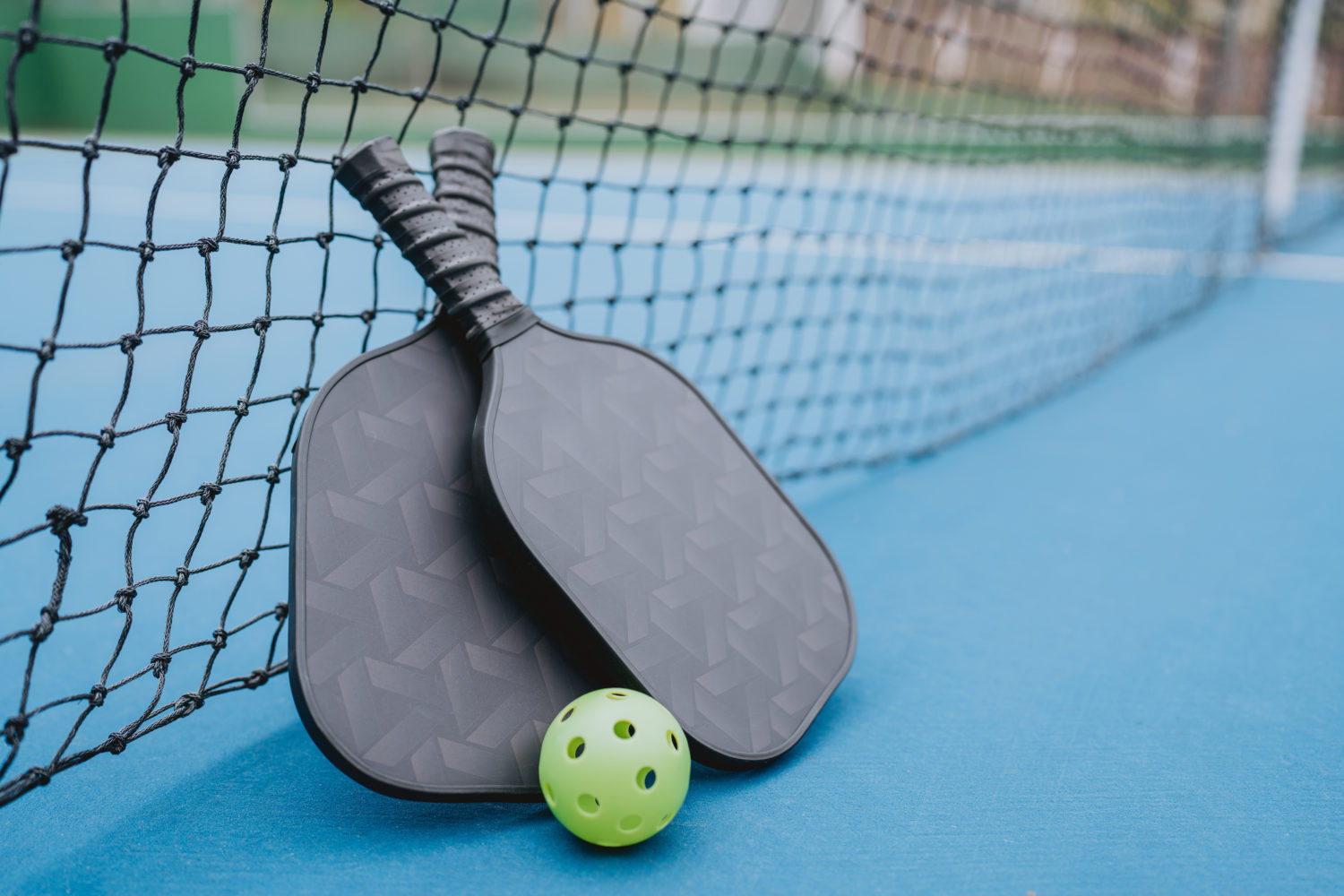Acupuncture for a dog looks surprisingly like acupuncture for a human—minus the flinching, plus a few treats.
Friday, a 50-pound American bulldog mix, bounces into the exam room at Friendship Hospital for Animals in Northwest DC, tail wagging. He’s drooling in anticipation of the lamb-lung filets that come along with the procedure he’s about to undergo.
As he chews on his first one and relaxes on a thick mat, veterinarian Nicole Karrasch carefully inserts 14 one-inch-long needles along his back, legs, and chest. The dog’s owner, Stephanie Reich, says medication makes Friday loopy, but when he gets acupuncture to relieve the pain in his elbow, shoulder, and leg, he loses some of his limp and regains the stamina to take longer walks.
At least seven local animal clinics offer acupuncture, including Palisades Veterinary Clinic and Nova Cat Clinic, in addition to independent vets. With dogs and cats living longer thanks to better nutrition and medicine—plus a DC demographic of pet parents willing to shell out about $115 per half-hour treatment—animal acupuncture has gone mainstream. Even the National Zoo uses it: Chief veterinarian Donald Neiffer has performed it on a lemur and an Andean bear.
Vets say that for elderly animals, the Chinese practice of tapping strategic body points with needles can ease pain when surgery is too risky. They also use it to alleviate asthma, dermatitis, diarrhea, kidney disease, and some reproductive problems. Most animals don’t seem to mind. In fact, some vets say that over time their patients appear to understand that the needles make them feel better.
While it’s hard to find definitive proof that acupuncture cures any conditions, many pets move more freely after treatment, an indication that they have less pain. And they’ve been getting acupuncture for millennia—records dating back 4,000 years show Chinese doctors performing it on horses. Today, Chi Institute of Traditional Chinese Veterinary Medicine’s acupuncture program graduates about 440 veterinarians each year, 320 of them from its US campus in Florida. The International Veterinary Acupuncture Society in Colorado certifies 115 to 150 vets annually. Though there’s no peer-reviewed research on the efficacy of Chinese medicine for humans, let alone animals, mounting anecdotal evidence has led to the spike in its popularity among Westerners.
At Friendship, a placid tortoiseshell cat named Akanya settles down for her treatment. Dr. Karrasch suspects she has arthritis. Akanya had become inactive, but when she started getting acupuncture twice a month, she returned to running around her house.
Lulu, an 11-year-old Doberman pinscher, is another regular. She has wobbler syndrome, a neurological issue typical of her breed that causes compression of the spinal cord. Lulu’s owner, Tripp Reed, brings her in once a week for a “spa day.” For $179, she gets a workout on the underwater treadmill, a nap, a walk, and electro-acupuncture, a treatment that involves clipping an electrode to the needle and delivering a light buzz to increase stimulation of the pressure point.
For pets that can’t—or won’t—come in-to an office, there are vets like Erica Barron, who got certified four years ago and does acupuncture house calls throughout Washington. She got into it four years ago when she saw a dog on the verge of being euthanized because he obsessively chewed his leg, causing constant infections. After acupuncture, she reports, he stopped chewing and healed within a couple of months.
“Acupuncture doesn’t help everyone,” says Barron, who treats about 20 animals a week. “But the ones it helps? Boy, does it help.”
This article appears in the December 2016 issue of Washingtonian.


















